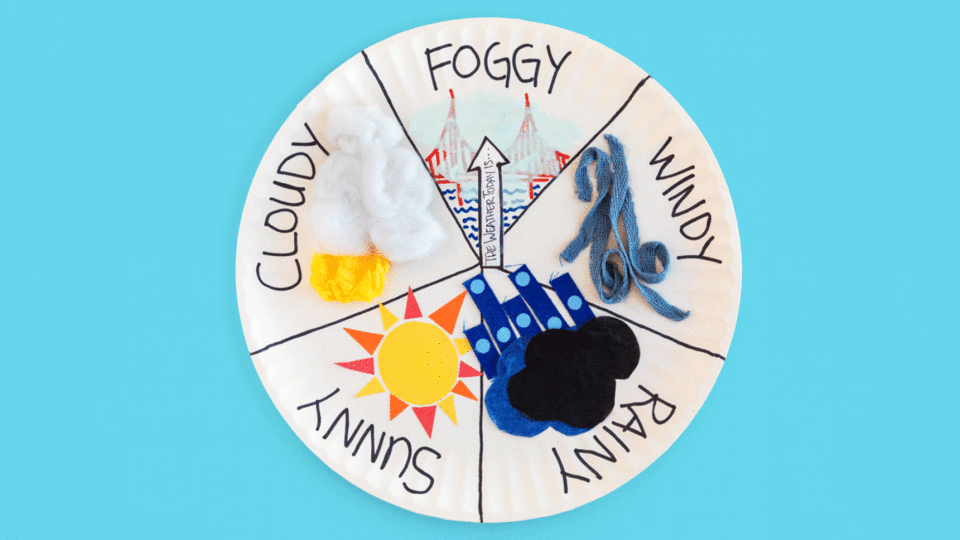
The world right outside your door is surprisingly wild. Become a backyard naturalist with over two dozen activities for kids ages 4-8.
No backyard (or local park) expedition is complete without this trusty activity pack. Prepare for five days of outdoor, close-to-home adventures with guided videos, crafts, and hands-on experiments.
Please note: While Science @ Home activities are designed to be conducted by kids, some little ones might need adult help with reading instructions and preparing crafts.
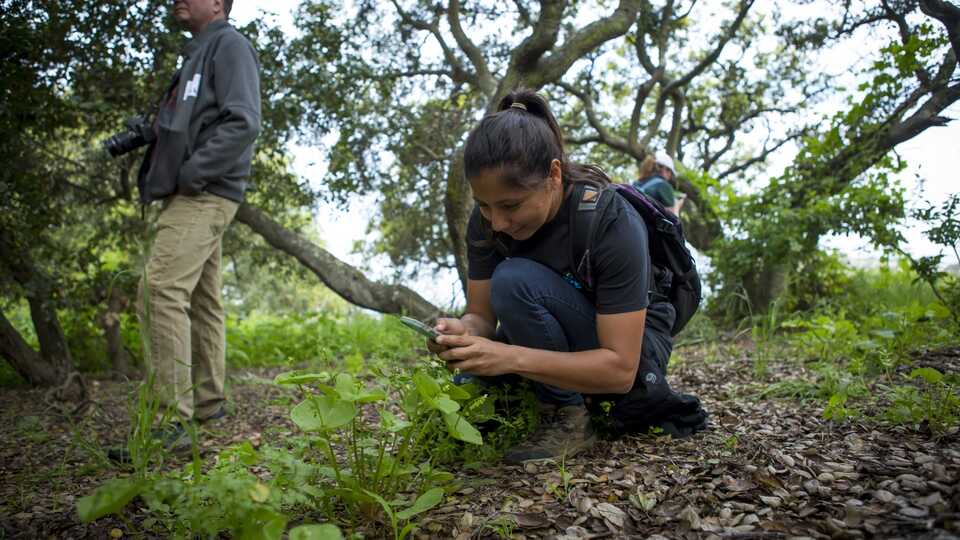
Day 1: Step outside
Welcome to the great outdoors! Today you’ll activate your senses, using a nature journal, online tools like Seek, and a weather clock to document your observations. (60-90 minutes)
Scientists keep track of their notes in journals. Practice your observation skills and keep track of all the plants and animals you encounter as you explore the nature near you.
What’s the weather like in your backyard? Do you have snow in the winter, or fog in the summer? Create your own weather wheel to keep track of the weather as the seasons change.
Not sure what kind of animal or plant you’re looking at? With adult permission, scan it with the Seek smartphone app and identify it in an instant! Watch the video for an introduction to iNaturalist’s latest creation and learn how to use it to explore the world around you.
From industrious ants to rascally raccoons, backyards, city parks, and even sidewalks are full of animals and plants. Identify them and color them to bring this scene to life.
The secret worlds of plants and animals are all around us—if you take the time to look closely. Practice your skills of observation with Academy educator Melissa and explore the secret worlds in your local environment!
As you watch this video, think about the four questions below. Share your answers with a friend or family member or just think in your head.
- Imagine you are only as tall as your thumb! Where would you want to live? Where would you put your house? What would it be made of?
- What is your favorite color? How many times can you spot this color from your window?
- Have you ever looked for shapes in clouds, tree bark, or in the patterns of a leaf? What shapes did you see?
- Plants can produce wonderful smells. Maybe you like flowers like roses, or herbs like rosemary or sage. What was the best plant smell that you ever discovered?
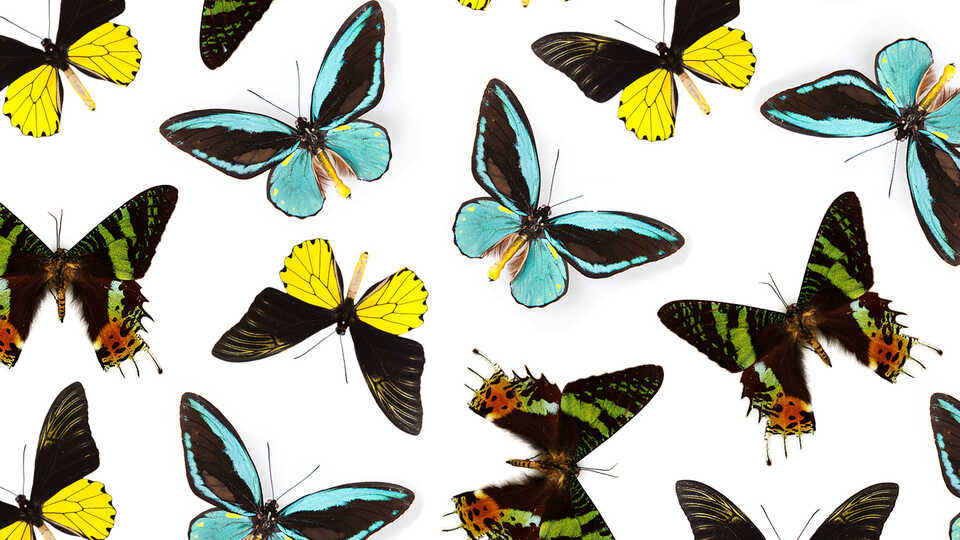
Day 2: Incredible insects
Insects are the most diverse group of animals on our planet—and there are millions more insect species that haven’t even been discovered yet! Investigate these tiny-but-mighty creatures through song, art, and sidewalk science. (45-60 minutes)
An arthropod is a type of animal with an exoskeleton. Some familiar arthropods are crabs, spiders, and scorpions. An opera is a stage play set to music and sung by performers. What do you get when you combine the two? An arthropod opera, of course!
While you watch this video, think about the four questions below. Share your answers with a friend or family member or just think in your head.
- Have you ever seen an insect, like a butterfly, or a spider? Where did you see the animal and what was it doing?
- Have you ever seen a play, musical, or heard someone sing a song? What do you remember about the experience?
- Did you have a favorite arthropod or song from the show? How do you think arthropods help the Earth?
- Music and art exist in every culture. Why do you think music and art are important to our world?
You don’t have to go very far to find exciting creatures. Join Academy educators Cindy and Eileen to learn how to discover bugs right outside your door. All you need is a clear container, a stick, a light-colored towel or cloth, and some optional masking tape.
While you watch this video, think about the four questions below. Share your answers with a friend or family member or just think in your head.
- When you hear the word “bug,” what type of animals do you think of?
- Where do you think bugs, like insects, live? Where have you found them?
- What type of bugs have you seen? Why do you think there are so many different types of bugs?
- When you were looking for bugs, what other life did you see around you? Did you see any plants or animals that were not bugs?
How do little creatures make such BIG sounds? Join Academy volunteer Pat for an up-close investigation into how insects use specialized body parts to communicate.
An insect’s body helps it thrive in its habitat. Some insects migrate with wings, others use color to camouflage. Some dig for shelter, and some stand up to their rivals. In this craft, you’ll learn all about different kinds of insect bodies—and then use your imagination to invent an all-new one.
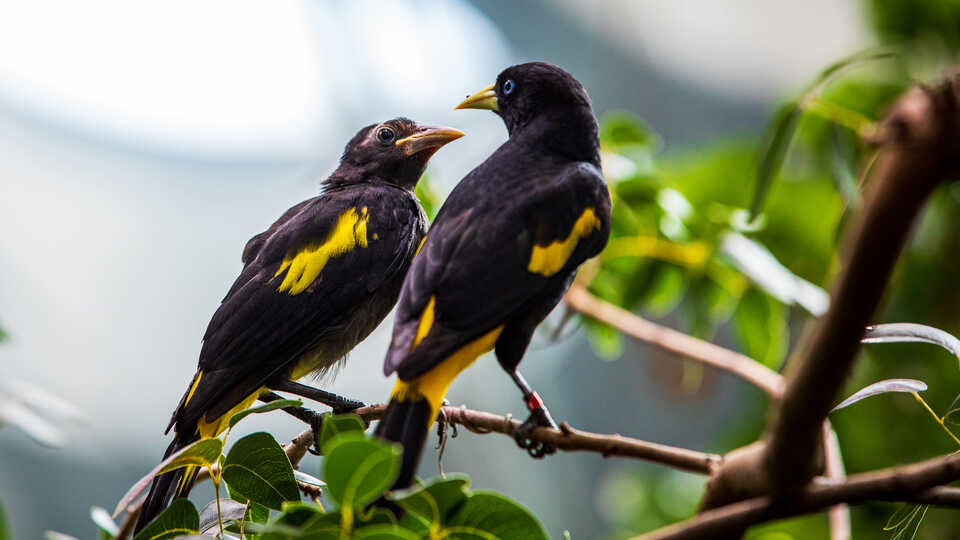
Day 3: The feathered and the furry
There are lots of different critters that share our backyards and neighborhoods. Learn about birds, the importance of predators and prey, and how we can all share our precious natural spaces. (45-90 minutes)
Need a hobby that’s worth tweeting about? Become a birdwatcher! Get some of the best birdwatching tips from Academy volunteer Jill, and take a closer look at two of our local favorite feathered friends.
Most birds spend a lot of time flying, looking for seeds and insects to eat, water to drink, and generally taking care of other bird business. While they fly, they face an invisible danger: our windows! Using tempera paint, you can create a beautiful mural on the outside of your window to protect the flying birds in your neighborhood.
Humans use binoculars to make small things look larger, or to help us see things that are far away, like birds flying in the sky or perched in a tall tree. In this craft, you’ll create and decorate your own pair of binoculars to help focus your observations on birds and other distant objects.
Humans poop. Animals scat! In this activity, learn how to identify all kinds of animals based on the scat they leave behind.
Animals are always on the lookout. Staying aware of their surroundings helps them find food to eat and avoid the attention of potential predators. Grab a (human) friend and test your instincts with this backyard edition of the classic “red light, green light” game.
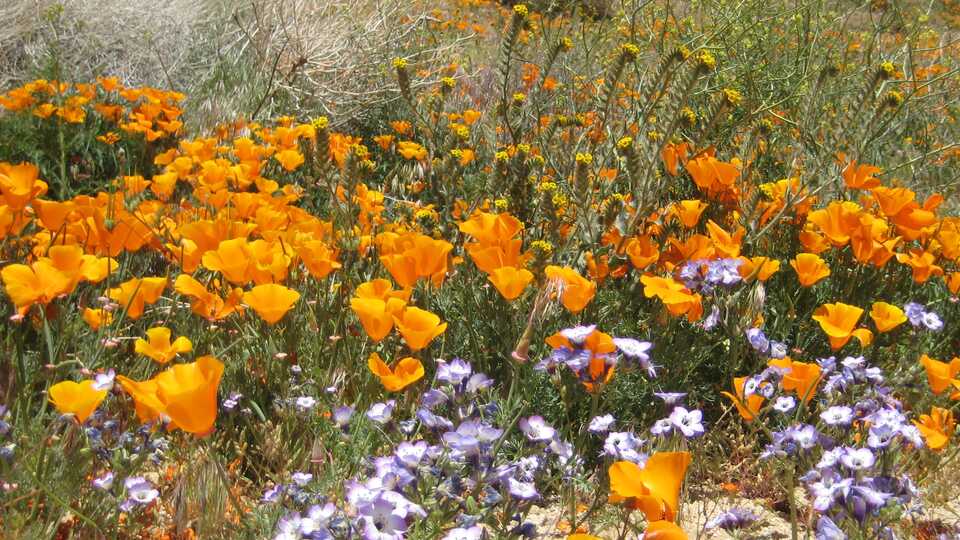
Day 4: Play with plants
Plants are beyond be-leaf! Go green with a variety of art, games, and building activities that celebrate the organisms that provide our planet with food, shelter, oxygen, and beauty. (60-90 minutes)
The beautiful, bright orange California poppy is California’s state flower. Color your own poppy and watch it bloom in water! As the paper absorbs the water, the fibers inside the paper expand, pushing the petals open.
From the tallest tree to the tiniest flower, plants are an incredibly diverse group, and people and animals all around the world rely on them for food, medicine, and shelter. Use this guide to practice the power of observation, and make friends with one of your plant neighbors.
We are connected to nature through what we eat because Earth provides everything plants, humans, and animals need to live. Play “Kitchen Bingo” to discover all the fruits, seeds, leaves, roots, and shoots that are “hidden” in the things we eat. Bon appétit!
Like to eat? You can thank a pollinator. Animal pollinators, like butterflies and bees, move pollen from flower to flower, helping them to reproduce and make more plants. Without these important pollinators, our world would be a less colorful—and less edible—place.
While you watch this video, think about the four questions below. Share your answers with a friend or family member or just think in your head.
- Have you ever seen an animal flying near a flower? What type of animal do you think it was?
- Do you eat any of the foods that were shown in the video? Was your food made with the help of an animal pollinator?
- Were any of the foods that were helped by pollinators a surprise to you? Which one didn’t seem like it needed an animal?
- Why do you think it is important for plants and animals to have places to live and food to eat?
Plants come in all shapes, sizes, and colors, provide places for animals, insects, and even humans to live, and produce fruit for us to eat and flowers to enjoy. In this artistic challenge, use your senses to observe the plants around you, then make your own masterpiece out of found plant material.
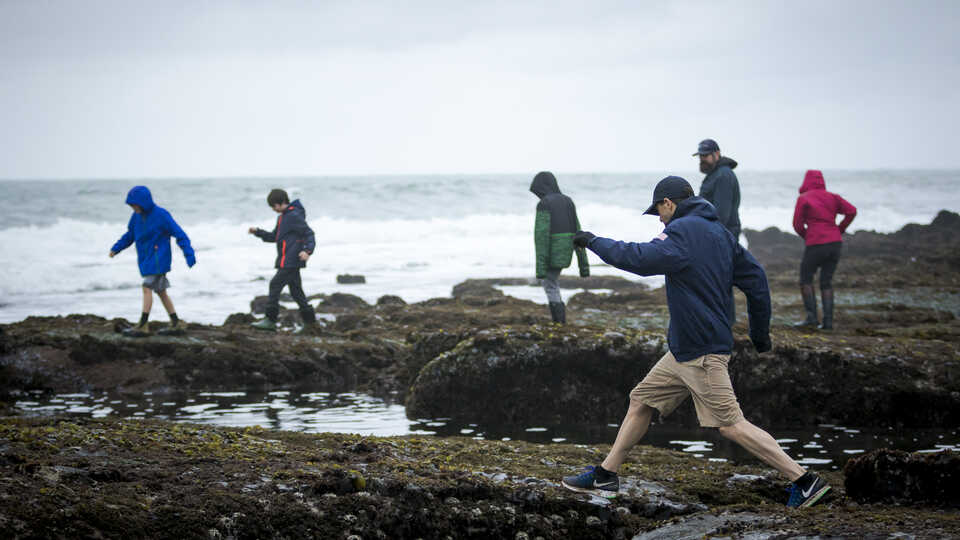
Day 5: Nature together
Humans are part of the natural world—not separate from it. Embrace your connection to the vibrant environment around you by getting your hands (a little bit) dirty. (60-90 minutes)
Detectives use their powers of observation and critical thinking skills to find clues and solve mysteries. Today, you'll be a detective-in-training as you head outside to investigate what kinds of animals live in trees.
While you watch this video, think about the four questions below. Share your answers with a friend or family member or just think in your head.
- What creatures do you think live on your block? Have you seen any of them while walking around your neighborhood? What have you seen?
- Today, we will discover what traces different creatures leave behind. What traces do you think you leave behind as you move through your home, neighborhood, or school? What could a detective learn about you from your traces?
- Is there a tree, bush, or rock that you would like to explore? What clues do you think you would find there?
- Are you by a window? Put on your observation eyes and look outside for one minute: What do you notice?
Who is the world's greatest musician? The Earth itself! Music involves different sounds and silences in rhythmic patterns, and songs often use words and musical sounds to describe things observed in the world. Always keep your ears open to the incredible tunes of our planet.
While you watch this video, think about the four questions below. Share your answers with a friend or family member or just think in your head.
- What is the weather like where you are right now? What sounds do you hear?
- What is your favorite animal and does it make any sounds? Try to copy the sounds that your animal makes!
- If you came up with a song about your favorite animal, what would you want to share with people about that animal? What sounds or music would play when your animal was present?
- Did you recognize any musical instruments or songs from the show? Share with someone and ask them the question, “What songs do you know?” Try to sing a familiar song together! Do you know any songs about nature?
The natural world is full of music, from the rhythmic sound of rain falling to the pitched melodies of bird songs. Add your own tune to nature’s soundtrack by making three simple musical instruments—“claves,” a “shaker,” and a stick “xylophone”— out of natural materials you find outside.
Where does the water go when it rains? See for yourself by creating a miniature world where you control the weather! In this activity you will make your own watershed using items from around the house. This activity is messy but can be done inside or outside.
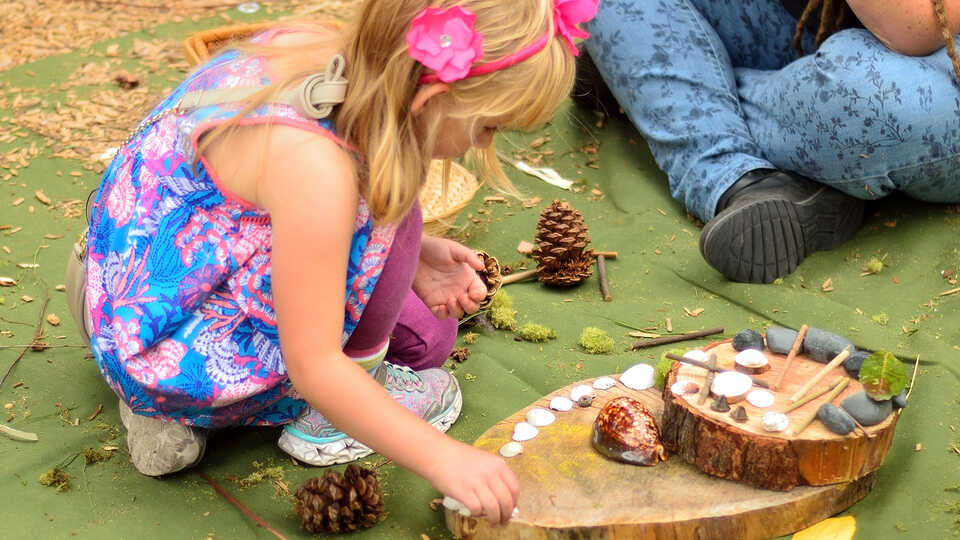
Kid & caregiver extension activities
Now that you’ve conquered your backyard, it’s time to seek greener pastures with iNaturalist, a family guide to nature play, and the inside scoop on bird feeders.
If you’ve mastered the Seek app, it’s time for iNaturalist! Download the app or log into the website to begin exploring and contributing your own findings to one of the world’s largest databases of community science observations.
Nature is a free playground! Encourage kids to directly engage with nature through tinkering and sculpture in a safe and supportive environment.
Bird feeders are a common sight in many backyards and porches, but hang on before you hang one up! Learn about the benefits and concerns of using bird feeders and ways to responsibly manage one.
Enjoy an eclectic array of science content for all ages, from distance learning resources to in-depth livestreams.